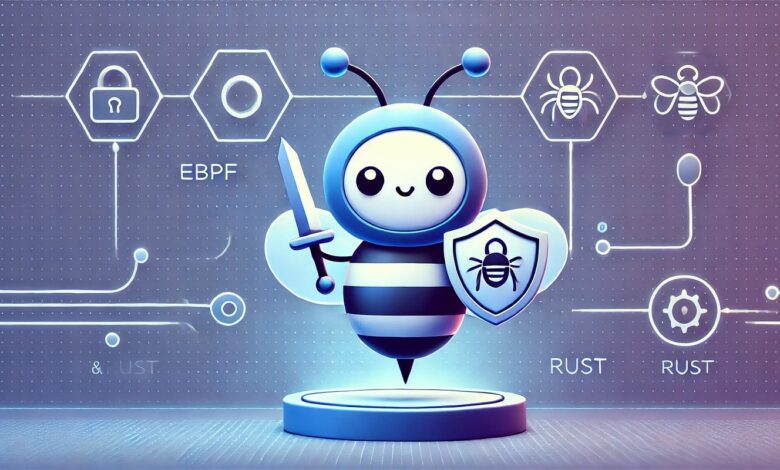Inspect a TCP/IP Packet Header Using eBPF: A Simple Guide

Inspect a TCP/IP Packet Header Using eBPF might sound complex, but it’s actually quite interesting and useful! In this blog post, we’ll dive into how you can look at the details inside TCP/IP packets with the help of eBPF. Whether you’re a beginner or just curious, this guide will break down the process into easy steps.
We’ll start by understanding what a TCP/IP packet header is and why it’s important. Then, we’ll see how eBPF helps us inspect these packets, making network analysis much easier. By the end, you’ll have a clearer picture of packet headers and how eBPF can be a powerful tool in network monitoring.
What Inspect a TCP/IP Packet Header Using eBPF
A TCP/IP packet header is a crucial part of network communication. When data is sent over the internet, it’s broken into smaller pieces called packets. Each packet has a header, which is like a label that tells where the packet should go. This header includes information like the source and destination addresses.
The header helps computers understand how to reassemble the data correctly. Without this header, packets would be like pieces of a puzzle with no picture on the box. By examining the packet header, you can see details such as the packet’s origin and its journey.
When you are inspecting a TCP/IP packet header using eBPF, you get a closer look at these details. eBPF tools can read and analyze this header, helping you understand what’s happening on your network. This is especially useful for troubleshooting network problems or ensuring data is being sent and received properly.
Why Inspect a TCP/IP Packet Header Using eBPF
Inspect a TCP/IP Packet Header Using eBPF is a powerful way to understand network traffic. eBPF, or extended Berkeley Packet Filter, is a tool that allows you to filter and analyze packets in real time. By using eBPF, you can look deeper into the packet headers to see exactly what’s inside them.
One major reason for using eBPF is its ability to provide detailed insights into network performance. For example, if you notice slow network speeds, eBPF can help you pinpoint whether the problem is due to packet loss or delays in packet handling. This helps in diagnosing issues more effectively.
Another reason is security. By inspecting packets with eBPF, you can detect unusual patterns or potential threats. This allows you to take action before any real damage is done. Overall, eBPF makes it easier to monitor and protect your network.
Getting Started with eBPF for Packet Inspection
Getting started with Inspect a TCP/IP Packet Header Using eBPF a few basic steps. First, you need to set up eBPF on your system. This usually requires installing the necessary tools and libraries. Once installed, you can start writing programs to filter and inspect packets.
Next, you’ll need to learn how to write eBPF code to analyze packet headers. This might sound technical, but there are many resources available to help you. You can start with simple examples and gradually move on to more complex tasks.
After setting up and coding, you can begin inspecting TCP/IP packets. eBPF will allow you to see the details of each packet header, such as its source, destination, and other important information. This insight can be incredibly valuable for understanding and troubleshooting network issues.
Understanding the TCP/IP Packet Structure
The structure of a TCP/IP packet is key to understanding network data. Each packet is divided into two main parts: the header and the payload. The header contains metadata about the packet, like its source and destination addresses, while the payload contains the actual data being sent.
In more detail, the TCP/IP packet header includes fields such as the source port, destination port, sequence number, and acknowledgment number. Each of these fields plays a role in ensuring that data is sent and received correctly. For example, the sequence number helps in reassembling packets in the right order.
By Inspect a TCP/IP Packet Header Using eBPF you can view and analyze these fields. This allows you to see exactly how data is being transferred and identify any issues that might be occurring. Understanding this structure is crucial for effective network management.
How eBPF Helps in Network Monitoring
eBPF is a valuable tool for network monitoring because it can Inspect a TCP/IP Packet Header Using eBPF you can set up rules to capture specific types of packets or analyze their contents. This real-time monitoring helps you keep track of network activity and spot any problems quickly.
One of the key benefits of eBPF is its efficiency. It runs directly within the Linux kernel, which means it can process packets very quickly without slowing down the system. This speed is crucial for monitoring busy networks where timely data analysis is essential.
Additionally, eBPF allows you to customize your monitoring setup. You can write your own eBPF programs to check for specific packet details or conditions. This flexibility means you can tailor the monitoring to suit your network’s unique needs.
Step-by-Step Guide to Inspecting Packets with eBPF
Inspecting packets with eBPF involves a few straightforward steps. First, you need to install eBPF tools on your system. This setup process usually includes downloading and configuring the necessary software.
Once you have eBPF installed, you can start writing and loading eBPF programs. These programs will define how packets are filtered and analyzed. For example, you can write a program to capture packets with certain characteristics or to inspect specific parts of the packet header.
After setting up your Inspect a TCP/IP Packet Header Using eBPF programs, you can start monitoring your network. eBPF will process packets according to your rules, providing insights into the data flow and helping you identify any issues. This step-by-step approach makes it easier to understand and use eBPF for packet inspection.
Common Fields in a TCP/IP Packet Header
A TCP/IP packet header includes several important fields. These fields provide information about the packet’s source, destination, and other details necessary for proper data transmission. Some common fields include the source port, destination port, sequence number, and acknowledgment number.
The source port and destination port fields help identify the applications involved in the communication. The sequence number ensures that packets are reassembled in the correct order, while the acknowledgment number confirms receipt of data. These fields are crucial for reliable communication between systems.
By examining these fields using eBPF, you can gain a better understanding of how packets are being handled on your network. This can help you troubleshoot issues and ensure that data is transmitted efficiently and correctly.
Setting Up eBPF for Packet Analysis
Setting up eBPF for packet analysis requires a few steps. First, you need to install eBPF tools and libraries on your system. This typically involves using package managers or downloading the software from trusted sources.
After installation, you’ll need to write eBPF programs to define how packets should be analyzed. This might involve filtering packets based on specific criteria or extracting information from the packet header. Writing these programs requires some knowledge of eBPF syntax and programming.
Once your eBPF programs are ready, you can load them into the kernel and start analyzing packets. eBPF will process packets according to your rules, providing valuable insights into network traffic. This setup helps you monitor and manage your network more effectively.
Examples of Packet Inspection Using eBPF
To see how eBPF can be used for packet inspection, let’s look at some examples. One common use is filtering packets based on their source or destination addresses. For instance, you can write an eBPF program to capture packets coming from a specific IP address or port.
Another example is analyzing packet headers for specific fields. You might use eBPF to check the sequence number or acknowledgment number in the TCP header. This can help you understand the flow of data and detect any issues in packet transmission.
By experimenting with these examples, you can learn how to use eBPF effectively for packet inspection. These practical applications demonstrate the power and flexibility of eBPF in analyzing network traffic.
Troubleshooting Packet Inspection Issues
When inspecting packets with eBPF, you might encounter some issues. One common problem is that packets may not be captured or analyzed as expected. This can happen due to incorrect eBPF program code or configuration errors.
To troubleshoot these issues, start by checking your eBPF program code for any mistakes. Ensure that your filters and analysis rules are set up correctly. Also, verify that eBPF tools and libraries are properly installed and configured on your system.
If you continue to experience problems, consult eBPF documentation or seek help from online forums. There are many resources available to assist with troubleshooting and resolving issues related to packet inspection using eBPF.
Benefits of Using eBPF for TCP/IP Analysis
Using eBPF for TCP/IP analysis offers several benefits. First, eBPF provides real-time packet inspection, allowing you to monitor network traffic as it happens. This can help you quickly identify and address network issues.
Another benefit is eBPF’s efficiency. Because it runs within the Linux kernel, eBPF can process packets very quickly, minimizing any impact on system performance. This speed is essential for managing busy networks and ensuring smooth operation.
Additionally, eBPF offers flexibility in how you analyze packets. You can write custom eBPF programs to focus on specific aspects of packet headers or data. This customization makes eBPF a powerful tool for network analysis and management.
Advanced Techniques in Packet Inspection with eBPF
For those looking to go beyond basic packet inspection, eBPF offers advanced techniques. One technique is using eBPF maps to store and analyze packet data. These maps can hold information about packet flow, which can be useful for detailed analysis.
Another advanced technique is combining eBPF with other tools for enhanced analysis. For example, you can integrate eBPF with network monitoring systems to provide a more comprehensive view of network performance and security.
By exploring these advanced techniques, you can gain deeper insights into network traffic and improve your ability to monitor and manage your network effectively.
Understanding TCP/IP Packet Headers
Understanding TCP/IP packet headers is key to grasping how data travels across networks. Each packet header contains vital information that guides the packet from the source to the destination. This information includes the source and destination IP addresses, which tell the network where the packet is coming from and where it should go.
The packet header also includes sequence numbers, which help in ordering packets correctly. Since data is broken into smaller packets for transmission, sequence numbers are crucial for reassembling them in the right order at the receiving end. Other fields like the acknowledgment number confirm that packets have been received successfully. This ensures that no data is lost or duplicated.
Additionally, the header contains flags and control bits, which manage the connection and flow of data. For example, flags can indicate whether a connection is being initiated or closed. By analyzing these headers, network engineers can diagnose and troubleshoot issues, optimize performance, and ensure reliable data transmission. Understanding how these headers work helps in managing and securing network communications effectively.
How eBPF Enhances Packet Inspection
eBPF, or extended Berkeley Packet Filter, enhances packet inspection by providing a flexible and efficient way to analyze network traffic. With eBPF, you can write custom programs that run directly in the Linux kernel, allowing for real-time packet analysis without slowing down the system.
One of the main advantages of eBPF is its ability to filter and process packets on the fly. You can define specific criteria for packet inspection, such as examining certain fields in the packet header or detecting unusual patterns in the traffic. This level of customization makes it easier to monitor network behavior and identify potential issues.
Moreover, eBPF supports high-performance packet analysis by operating within the kernel. This means that it can handle large volumes of network traffic efficiently, providing insights without introducing latency. Using eBPF, you can gain deeper visibility into network operations, enhancing your ability to troubleshoot problems and improve network security.
Setting Up eBPF for TCP/IP Packet Analysis
Setting up eBPF for TCP/IP packet analysis involves several steps. First, you need to install eBPF tools and libraries on your system. This may require configuring your environment to support eBPF programs and ensuring that all dependencies are met.
Once installed, you will need to write eBPF programs to specify what packet data you want to analyze. These programs can be customized to focus on specific fields within the TCP/IP packet header or to filter packets based on certain criteria. For example, you might write a program to monitor packets with particular flags or sequence numbers.
After writing your eBPF code, you will need to load and attach it to the network interface you want to monitor. This involves using eBPF commands to activate your program and start capturing packets. Once everything is set up, you can begin analyzing the packets in real-time and gathering valuable insights about network traffic.
Key Fields in TCP/IP Packet Headers
TCP/IP packet headers contain several key fields that are essential for data transmission. These fields provide information about the packet’s source, destination, and how it should be processed.
The source and destination IP addresses identify the sender and receiver of the packet, while the source and destination ports specify which applications are communicating. Sequence and acknowledgment numbers are used to track the order of packets and confirm successful delivery. These fields ensure that data is reassembled correctly and that no packets are lost or duplicated.
Other important fields include flags, which control the behavior of the connection, and the window size, which helps manage the flow of data. By understanding these fields, you can better manage network traffic and troubleshoot issues that arise during data transmission. This knowledge is crucial for maintaining efficient and reliable network operations.
Real-World Applications of Inspect a TCP/IP Packet Header Using eBPF
eBPF has various real-world applications for packet analysis that can greatly enhance network management. One common use is in network security, where eBPF helps detect and mitigate malicious activities. By analyzing packet headers in real-time, eBPF can identify suspicious patterns and alert administrators to potential threats.
Another application is in network performance monitoring. eBPF can provide insights into network traffic, such as identifying bottlenecks or inefficiencies. This information is valuable for optimizing network performance and ensuring that data is transmitted smoothly and efficiently.
Additionally, eBPF can be used for troubleshooting network issues. By examining packet headers and tracking specific network behaviors, administrators can pinpoint problems and implement solutions more effectively. These practical applications demonstrate the versatility and power of eBPF in managing and securing network environments.
Troubleshooting Common Inspect a TCP/IP Packet Header Using eBPF
When using eBPF for packet analysis, you may encounter some common issues that need troubleshooting. One issue could be that eBPF programs are not capturing packets as expected. This might happen if the program is not correctly configured or if there are errors in the code.
Another problem could be related to performance. If eBPF is not running efficiently, it could impact the system’s overall performance. To address this, check the eBPF code for optimization opportunities and ensure that the system has enough resources to handle packet analysis.
Conclusion
Inspecting a TCP/IP packet header using eBPF is like opening a special letter to see how it travels through the internet. By understanding the packet header, we learn how data gets from one place to another safely. eBPF makes this job easier and faster because it works right inside the computer’s main system, helping us see the packet details in real-time.
Using eBPF, we can find and fix problems, keep our network secure, and make sure everything runs smoothly. It’s like having a super tool that helps us understand and control the flow of data. With this knowledge, we can make our networks better and more reliable, ensuring our online activities are safe and efficient.



